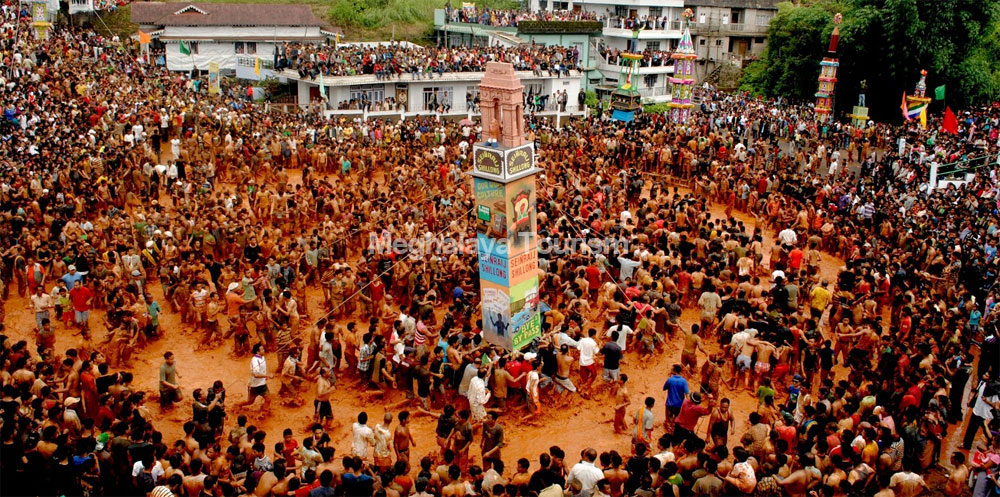Venue : Jowai in Meghalaya, India.
The Behdienkhlam Festival
Behdienkhlam Festival is the most celebrated Cultural festival among the Pnars. Behdienkhlam (chasing away the Demon of Cholera) is celebrated annually in July after the sowing period, the most important dance festival of the Jaintia tribes. This festival Tour is also an invocation to God, seeking his blessings for a bumper harvest. The women however do not participate in the dancing, as they have an important function of offering sacrificial food to the spirits of the forefathers. The festival held at Jowai is one of the most well known and recreational festival in Meghalaya.

The Rituals in the Behdienkhlam Festival
A series of religious rites is being performed by the Daloi (chief). During the Behdienkhlam Cultural Festival Tour, young men make a symbolic gesture of driving away of the evil spirit, plague and disease by beating of the roof of every house with bamboo poles.
The climax of the celebration is the fight for a large undressed beam by two groups of people in opposition to each other. This leads to the heavy beam get across a muddy ditch called Wah-eit-nar. A lot of horse play enters into this part of the event, when mud is smeared by the participants on each other.
During the celebrations of Behdienkhlam festival of North East India, the ceremony and ritual is carried out for three days and on the last day, in the afternoon people would gather in a place called Aitnar and both young and old would dance to the tunes of the pipes and drums. The dancers are highly emotional when tall-decorated structures called rots and a wooden post-called khnongs would be brought into the pool. It is desirable that there should be rain on the day of the festival. The climax of this famous festival of North East India is when people dressed up in their best attire would converge to a place called Mynthong to witness a game played similar to football, called dad-lawakor. The game is played with a wooden ball between the Northerners and the Southerners. The side wins the match by putting the ball on the otherside would signify that in the following year there would be a bumper harvest in that particular region. In the evening there would be a lot of funfair and merry making.








